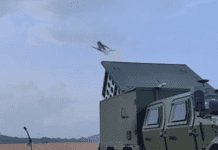This post is also available in:
 עברית (Hebrew)
עברית (Hebrew)
US-based startup OpenMind is developing a new platform aimed at improving coordination and interoperability between intelligent machines. At the heart of its system is OM1, a hardware-independent operating system designed to provide a shared AI framework across robotic platforms. Now, the company has introduced FABRIC, a protocol enabling secure identification and contextual sharing between robots—essentially allowing machines to recognize one another and work together.
The goal is to move away from siloed robotic systems—where machines operate in isolation—and toward a networked model where robots can learn from each other and respond more effectively to real-world conditions. FABRIC is designed to facilitate this kind of machine-to-machine communication, allowing independent robots to securely verify each other’s identities, confirm physical locations, and share contextual data on the fly.
According to OpenMind, together, they support more adaptive and coordinated machine behavior—an essential feature for use cases in dynamic or human-centric environments.
OM1 differs from legacy robotics platforms by being AI-native from the ground up. It integrates perception, large language models, memory, and contextual reasoning in a unified layer. This allows robots to interpret natural language, understand their environment, and make real-time decisions without needing to be hard-coded for specific tasks or hardware.
FABRIC builds on that by enabling decentralized collaboration. In practice, this could mean a robot recognizing an autonomous vehicle, authenticating it via FABRIC, and completing a task such as package retrieval without human intervention.
OpenMind is currently preparing for real-world testing of its OM1 platform with a fleet of robotic dogs expected to be deployed in various environments by September. These units will gather data to refine the system’s capabilities and explore user-driven use cases.
Backed by $20 million in funding, OpenMind’s vision is to lay the foundation for open, scalable robotic ecosystems—where intelligent machines can adapt, cooperate, and evolve.


























